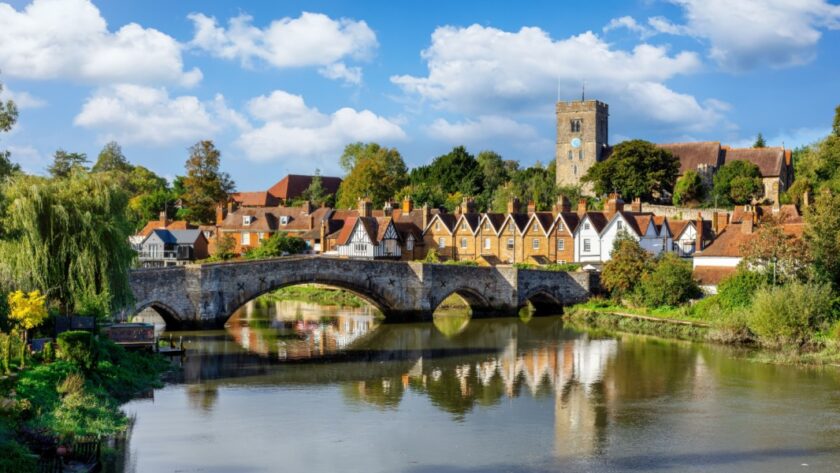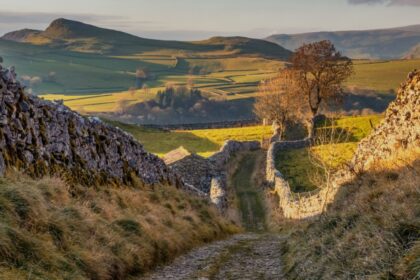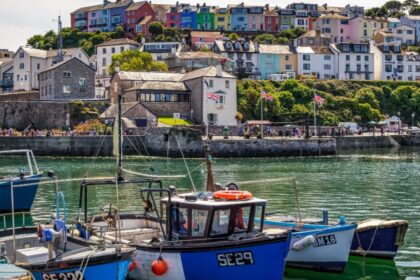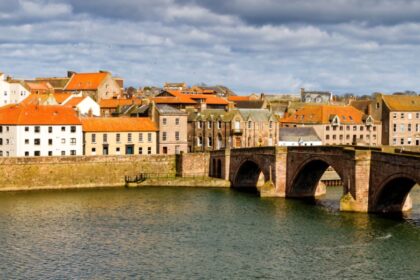There is a tendency, when thinking about South East England, to imagine an endless swirl of Range Rovers, wisteria-clad cottages, and villages where the local shop sells nothing but chutney and outrageously priced candles. And to be fair, that’s not wildly off. But there’s much more to the South East than its well-heeled reputation might suggest. This isn’t just the land of commuter towns and clipped hedges , it’s a patchwork of chalk cliffs, ancient forests, sun-dappled meadows, bustling market towns, royal palaces, and seaside resorts that are charmingly eccentric and occasionally just plain odd.
This is, after all, the bit of England where history goes to put its feet up. You’ve got Windsor, which looks like it’s been designed by someone with a deep love of flags and a very healthy budget. The castle there is still very much in use , a sort of royal pied-à-terre , and if you time it right, you might see the Changing of the Guard, which is a little like watching a very solemn parade where everyone’s overdressed and no one’s quite sure where they’re supposed to be looking.
Then there’s Oxford, which isn’t technically a museum but behaves like one. The entire city seems to be made of spires, bicycles, and people reading Latin for fun. It has that magical quality of being utterly beautiful even when it’s raining , which, helpfully, is quite often. The colleges are older than some countries, and the libraries smell reassuringly of paper and cleverness. If you squint, you can almost see CS Lewis popping out of a pub or Tolkien scribbling notes on the back of a beer mat.
If it’s coastal charms you’re after
Head south to Brighton, where the sea meets the city in a joyful, chaotic, slightly theatrical embrace. Brighton is like that cousin who turns up late to weddings, slightly hungover but always great fun. It’s home to the world’s most gloriously over-the-top Royal Pavilion , which looks, quite frankly, like the Taj Mahal got a bit carried away on a weekend in England , and one of the oldest electric railways in the world, which still trundles along the seafront with heroic optimism. There are pebbles instead of sand, sure, but it more than makes up for it in spirit, drag shows, and vegan sausage rolls.
Further along the coast you’ll find Hastings, Eastbourne, and the beguiling Seven Sisters , a series of chalk cliffs so startlingly white and sheer that they look like they’ve been Photoshopped by nature. The South Downs roll inland behind them like the folds of a giant green duvet, and if you’re lucky, you’ll find a pub tucked away in the hills serving pints that taste like they were brewed by benevolent monks with excellent taste.
But not everything is old and grand
The South East is full of smaller surprises , towns and villages where time seems to have gently dozed off. Places like Rye, which appears to be made entirely of cobbles, crooked timbers, and tearooms, or Arundel, where you half expect a knight to trot past as you browse for jam. There’s something quietly magical about these towns , a feeling that the world moves just a bit more slowly there, and everyone has agreed not to bring it up.
And then there’s the countryside
The Weald, the Chilterns, the North Downs , rolling hills, ancient woodlands, and footpaths that meander through fields of sheep, occasionally leading you into a nettle patch and out the other side into what can only be described as postcard material. It’s walking country , not the dramatic kind that makes your calves weep, but the gently lovely sort that ends with a cold drink and possibly a ploughman’s lunch.
The region also excels at gardens
Perhaps because it has just the right amount of weather. Too far north and your roses sulk; too far south and your lawns crack. But here, everything blooms with enthusiasm. Sissinghurst, Wisley, Great Dixter , these are gardens where even the weeds seem tasteful. It’s not just flowers, though. There’s a deep sense of heritage here , castles tucked into the landscape, ancient yew trees that look like they’ve seen things, and Roman villas still showing off their mosaics like it’s 200 AD and they’re trying to impress the emperor.
And yes it’s posh in parts
In some villages, you’ll find more dogs than children and more delicatessens than sense. Estate agents here speak in hushed tones about “character properties” and “coach houses” and “proximity to the station” , which is code for “someone’s going to spend far too much on this because it’s an hour from London and has a nice fireplace.” But poke around a bit and you’ll also find faded seaside grandeur, slightly crumbling high streets with excellent charity shops, and nature reserves full of birds that have come here on holiday from Africa, which frankly seems like a bold choice.
South East England is many things
It’s the cradle of kings and scholars, the Sunday-roast heartland of England, the gentle curve of coast where Victorians once took the air and teenagers now take selfies. It’s a place where past and present jostle together , often in the same tearoom , and where, if you’ve packed a raincoat, a pair of walking boots, and a sense of humour, you’ll do just fine.
Come for the castles. Stay for the cake.





